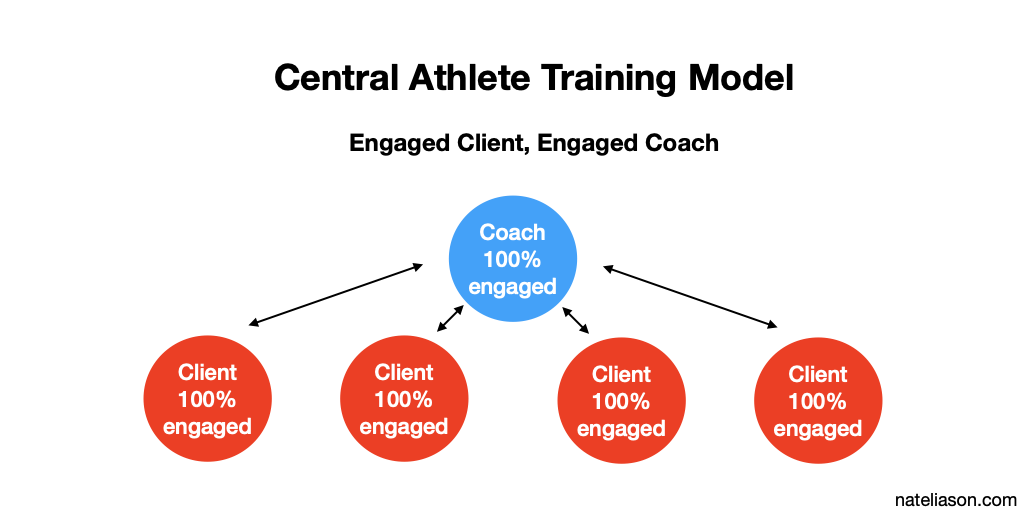Old Business, New Tricks

I started this post before all the COVID-19 madness. It was an interesting idea then, but it's especially relevant now.
I've been working out for the last decade. I've been a member of every kind of gym, from mass market Gold's Gyms to bougie Equinoxes.
And while the vibe and clientele in a Gold's is very different (and better) from the patrons of a Manhattan Equinox, they both follow the same business model:
- Charge a monthly fee for access.
- Upsell personal training, gear, snacks, etc.
It's safe, reliable, easy, but also hard to defend. If you experience a sudden loss of income and need to cancel your Equinox membership to switch to Planet Fitness, you're still getting basically the same thing. You might just feel less compulsion to geotag your Instagram posts.
Basically every gym in the world follows this model. But not Central Athlete.
Central Athlete, or CA, came up with their own structure. When you join the gym, you're also signing on with one of the coaches who works at the gym who becomes your dedicated fitness and health coach. They do all of your athletic programming, make nutritional and lifestyle recommendations, and are available to answer questions pretty much any day of the week.
But they don't do the typical overly complicated gym coaching you'll see at a place like Equinox.
Instead of having to meet your trainer 3 days a week for a 50 minute time slot, your CA coach prescribes your workouts via an app, and you can go into the gym any time of day to complete them.
Sometimes they take 40 minutes, sometimes they take 90. Sometimes you're not even going into the gym. Each coach has floor hours where they're in the gym available to spot and help you, but you don't have to go in when your coach is working. Every coach has access to your programming and can help you out.
By structuring their gym membership this way, they've solved two huge problems endemic to other gyms:
Problem 1 : Most people with a gym membership don't make any progress on their health.
That's great for profitability, but bad if you actually care about your customers.
By creating a gym membership where you have to work with a coach, they're ensuring that you're going to make progress. And they're filtering out anyone who's not serious about their fitness, which creates a really high quality community.
Problem 2 : Most personal training is prohibitively expensive.
A good personal trainer might charge anywhere from $50 to $150 an hour. At 3 sessions a week, you're looking at anywhere from $600 to $1800 a month. And that's on top of your gym membership.
But personal training is expensive because you're taking up 100% of that trainer's time, even though you don’t need it. Do they really need to stand next to you and stare at you for 5 minutes while you warm up on the bike? No, unless you’re into that.

By having the coaches floating around the gym helping anyone as needed, CA significantly increases the leverage of each coach who works there, while radically reducing the cost of getting personalized fitness.

Learning from the Central Athlete model, a good way to brainstorm business ideas might be: Can you find an old business you can put a new spin on?
People need electricians, lawn care, car maintenance. We’ll start going to cafes, nail salons, and restaurants again eventually. There are certainly better ways to do many of those businesses, with or without new technology.
Is there a “boring” kind of business you’re interested in where you can put an interesting new twist on it? If you can come up with a clever tweak to make customers happier or more successful, you could have a huge business on your hands.

